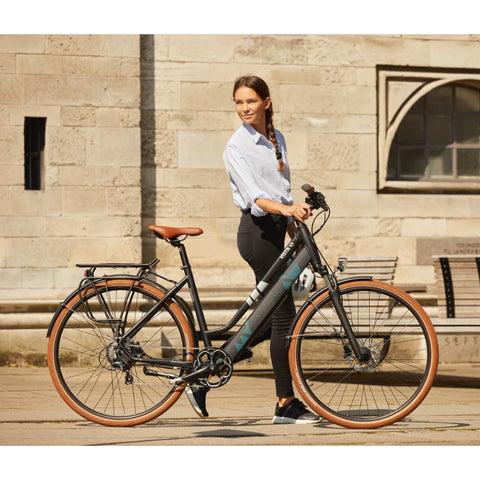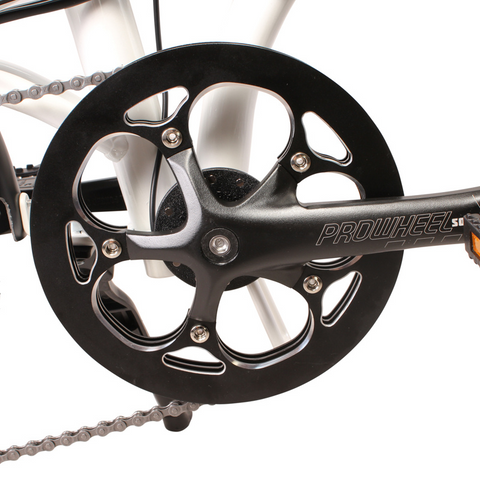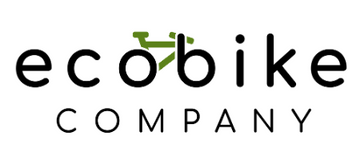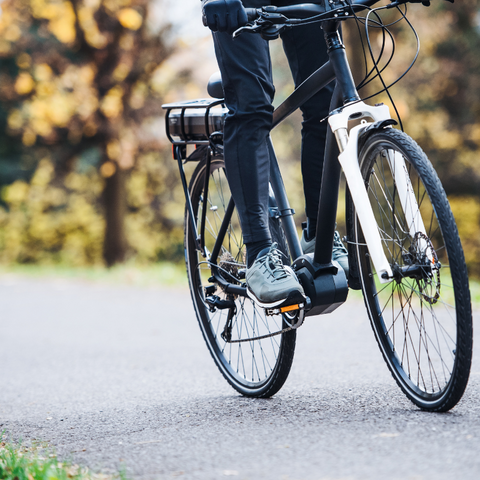Hub vs. Mid-Drive Motors in E-Bikes: Which One Should You Choose?
In this comprehensive guide, we'll delve into the nuances of hub and mid-drive motors, exploring their respective strengths and weaknesses. Whether you're a daily commuter navigating urban streets or a weekend adventurer seeking off-road thrills, selecting the right motor type is paramount for maximising the enjoyment and utility of your e-bike journey.

Shop today and Enjoy The Power of electric biking!
Understanding Hub Motors
Hub motors are a popular choice in the realm of electric bikes, distinguished by their placement within the wheel hub. This design integrates the motor seamlessly into the bike's rear or front wheel, offering a compact and streamlined solution for electric power assistance.
How does Hub Motors Work?
Hub motors operate by directly driving the wheel they are integrated into, providing propulsion through the rotational force generated by the motor's internal components. This configuration eliminates the need for additional gears or drivetrains, simplifying the overall design of the e-bike.
Advantages of Hub Motors
-
Simplicity in Design and Maintenance: Hub motors boast a straightforward construction with fewer moving parts, making them more reliable and easier to maintain compared to mid-drive counterparts. Routine tasks like lubrication and inspection are hassle-free, appealing to riders seeking low-maintenance transportation solutions.
-
Direct Drive System for Smoother Operation: Hub motors feature a direct drive system, transmitting power directly to the wheel without intermediary components. This results in a seamless and responsive ride, with minimal vibration or noise. Whether cruising city streets or suburban pathways, riders enjoy efficient power delivery and enhanced overall riding experience.
- Suitable for Flat Terrains and Casual Riding: Hub motors excel in flat terrain and moderate inclines, making them ideal for leisurely rides through urban or countryside landscapes. They provide practical and convenient transportation for commuters traversing even surfaces daily.
Limitations of Hub Motors
-
Limited Torque for Steep Inclines: Despite their performance on flat terrains, hub motors may struggle with steep inclines or challenging uphill climbs due to their limited torque output. Riders encountering hilly routes might find hub motors lacking the necessary power to efficiently conquer steep gradients.
- Weight Distribution Issues: The placement of the motor within the wheel hub can lead to weight distribution concerns, affecting the e-bike's handling and stability. This concentration of mass in the wheel hub can result in a less balanced ride, particularly noticeable at higher speeds or during cornering manoeuvres. Riders may experience slight imbalances, especially when navigating tight turns or uneven terrain.

Exploring Mid-Drive Motors
Mid-drive motors represent another prominent option in the realm of e-bikes, positioned within the bike's frame near the pedals. This strategic placement provides a range of advantages that cater to riders seeking enhanced performance and versatility.
How does Mid-Drive Motors Work?
Mid-drive motors operate by transferring power to the bike's drivetrain, typically through a chain or belt drive system. Unlike hub motors, which drive the wheel directly, mid-drive motors leverage the bike's existing gears to optimize power delivery. This integration allows for efficient utilisation of the bike's gear ratios, enhancing both speed and torque output.
Advantages of Mid-Drive Motor
-
Centralised Weight Distribution: Mid-drive motors placed in the bike's central frame provide superior balance and handling compared to hub motors. This positioning enhances control, particularly in technical terrain and during cornering.
-
Higher Torque Output for Hill Climbing: Mid-drive motors boast greater torque, making them ideal for conquering steep inclines and challenging terrain. Riders can ascend hills effortlessly without sacrificing speed or performance.
- Efficient Power Delivery Through Gears: Mid-drive motors leverage the bike's gears for optimized power delivery. This dynamic capability adjusts power output to match varying terrain, resulting in efficient energy consumption and extended battery life.
Limitations of Mid-Drive Motors
-
Complex Design and Maintenance: Mid-drive motors are intricately integrated into the bike's drivetrain, leading to higher maintenance requirements compared to hub motors. Riders should expect more frequent servicing and potential repair costs.
- Higher Cost: Mid-drive e-bikes often come with a higher price tag due to the advanced technology involved. While the investment may justify the superior performance, budget-conscious consumers should consider the financial implications carefully.
Performance Comparison
Flat Terrain Commuting
-
Hub Motors: Hub motors excel on flat terrain, providing smooth and effortless assistance for commuters navigating city streets or suburban pathways. Their direct drive system ensures efficient power delivery, making them ideal for casual rides and daily commuting.
- Mid-Drive Motors: While mid-drive motors also perform well on flat terrain, their ability to leverage the bike's gears offers added versatility and efficiency. Riders can adjust their gear ratio to match their desired speed and exert less effort while maintaining consistent performance.
Uphill Climbs
-
Hub Motors: Hub motors may struggle with steep inclines due to their limited torque output. Riders tackling uphill climbs may experience reduced performance and slower ascent times compared to mid-drive motors.
- Mid-Drive Motors: Mid-drive motors shine when it comes to uphill climbs, thanks to their higher torque output and ability to utilize the bike's gears effectively. They provide ample power for conquering steep gradients with ease, ensuring a smooth and efficient ascent.
-
Hub Motors: While hub motors are suitable for light off-road trails and casual mountain biking, their limited torque may pose challenges on more rugged terrain. Riders seeking optimal performance and control in challenging off-road conditions may find mid-drive motors better suited to their needs.
- Mid-Drive Motors: Mid-drive motors are well-suited for off-road and mountain biking adventures, offering superior torque and power delivery for navigating rough terrain. Their ability to adjust power output through the bike's gears enhances control and stability, making them the preferred choice for serious off-road enthusiasts.
Long-Distance Touring
-
Hub Motors: Hub motors are popular among long-distance tourers for their reliability and low maintenance requirements. While they may lack the torque of mid-drive motors, they provide consistent assistance over extended distances, making them a practical choice for leisurely touring.
- Mid-Drive Motors: Mid-drive motors excel in long-distance touring applications, offering efficient power delivery and superior hill-climbing capabilities. Riders can tackle varied terrain with confidence, knowing they have the power and versatility needed to complete their journey comfortably.
The Final Pedal in the Hub vs. Mid-Drive Motors Debate
In the debate between hub and mid-drive motors for e-bikes, the decision ultimately hinges on your unique needs and preferences. Whether you're cruising through city streets, tackling challenging trails, or embarking on epic adventures, the right e-bike motor can make all the difference. Choose wisely, and enjoy the thrill of electric-powered cycling wherever your journey takes you.
If you're ready to embark on your e-bike journey, we invite you to explore our collection of electric bikes. With a diverse range of models featuring both hub and mid-drive motors, you're sure to find the perfect fit for your riding style and preferences.




